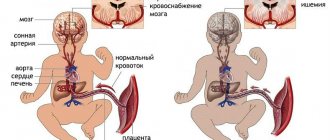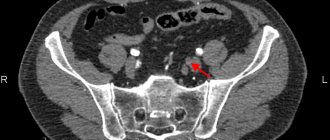It's no secret that blood circulation is the circulation of blood through the vascular network. Blood saturates the body with oxygen and nutrients, regulates metabolic processes. Blood circulation ensures the normal functioning of the body (especially the functions of the central nervous system).
Hemodynamics is the science of blood movement through the vessels of the circulatory system. Blood circulation does not stop due to differences in pressure in different parts of the vascular network (blood moves from an area with high pressure to an area with low pressure). There is a volumetric and linear velocity of blood flow.
Volumetric blood flow velocity
One of the main hemodynamic indicators is the volumetric blood flow velocity (VVV). Essentially, this is the amount of fluid that flows through the cross-section of blood vessels per unit of time (ml/s). Many people are interested in what the volumetric velocity of blood flow is.
This indicator is measured using the Poiseuille formula:
Q =(P-P1)/R xn
Since R = 8nl/nr², the equation can look like this:
Q=(P-P1) nr²/8nL
Here L is the length, n is the number PI (3.14), r is the radius of the vessel.
RSD is the volume of blood that flows through a cross section per unit time
Using this formula, you can calculate the OSD, that is, the volume of fluid that passes through the vascular system per minute. For this reason, this indicator is also called minute volume of blood flow (MVR).
The circulatory system is closed, so the same volume of liquid passes through any cross-section per minute.
Q1 = Q2 =…Qn = const
The formula for continuity of blood flow is presented above. The blood circulation is a closed vascular pathway that consists of many branches, so the total lumen increases, although the lumen of each branch gradually narrows. Thus, the continuity formula says that the same amount of blood passes through all vessels.
This does not mean that the volume of liquid in all branches is the same, it varies depending on the diameter of the vessel, while the sum of all lumens does not change. This is very important when redistributing fluid throughout the organs.
Q = S × V
Here S is the cross-sectional area, and V is the linear speed of blood movement.
Linear blood flow velocity
The second most important hemodynamic value is the linear velocity of blood flow. The Toricelli equation will help determine this indicator:
V = v−2gP
Here V is the linear velocity and g is the acceleration due to gravity.
Toricelli's formula will help to identify LSC
If we take into account the resistance to blood flow, the formula takes the following form:
V = v-2g(P-Pr)
Here Pr is that part of the pressure that overcomes the resistance.
Having calculated the LSC, you can determine the GSC:
Q = SV, Q - Vnr², V = Q/nr²
According to the formula, the smaller the cross-section of the vessel, the faster the blood circulates. In the vascular network, the narrowest section is the aorta, and the widest is the capillaries (meaning the total lumen). Therefore, the average speed of circulating blood in the aorta is 500 mm/s, and in the capillaries – 0.5 mm/s.
The time during which the fluid passes through both circles of blood circulation in a calm state is 20 seconds, this is the norm for a healthy person. That is, each element of blood passes through the heart three times in 60 seconds. During heavy physical activity, this time is reduced to 9 seconds.
Circulating blood overcomes vascular resistance
Vascular resistance
Circulating blood encounters resistance along its path, which manifests itself as a result of friction of blood elements between themselves and the walls of blood vessels. The thicker the blood, the stronger the friction; this parameter is also influenced by the diameter of the vessel and the speed of blood flow.
Thanks to the heart, the blood quickly overcomes vascular resistance, as it pushes the fluid forward with pulsating movements. Resistance is stronger in those areas where smaller vessels depart from the arteries. The highest resistance is encountered by blood in the arterioles, since they have a minimal diameter and the blood moves quickly. Internal friction increases, and these vessels are prone to spasm. Resistance increases with distance from the aorta.
How does ultrasound show tortuosity and deformation of blood vessels?
Ultrasound of the vessels of the neck and head quite accurately shows changes in the shape and location of the arteries and the effect of these changes on blood flow. Most often in the practice of doctors, tortuosity of blood vessels occurs. Vascular tortuosity is an adaptation of the body to increased or unstable pressure and to various changes in the spine, which can sag in its height. This pathology is primarily associated with age-related characteristics or high blood pressure. In most hypertensive patients, ultrasound of the neck vessels will show either T-shaped or S-shaped tortuosity. Not all vascular tortuosity poses a threat to the health of patients. It is important for the neurologist to exclude loops and kinks in the arteries. The bending of the arteries at an acute angle is a kind of stenosis, which does not allow blood to pass through and requires surgical intervention. The results of the ultrasound scan will answer the question of whether this tortuosity is obstructing blood flow, since this determines the form and urgency of treatment. If the tortuosity severely deforms the vessel, when it bends at an acute angle or twists in a loop, the neurologist should refer the patient for a consultation with a vascular surgeon to decide on the need for surgical intervention.
Previous NextArterial blood flow
Blood in the arteries moves from the left ventricle, aorta to the capillaries, veins, and right atrium. During systole (contraction), the volume of fluid in the vessels increases, and at the time of diastole, the amount of blood decreases and the flow slows down. As the volume of arterial fluid increases during heart contraction, the pressure increases.
As the amount of arterial blood increases during systole, the pressure increases
A sphygmogram will help calculate blood pressure (BP). A special sensor is applied to the skin above the artery, the pulse wave is recorded and analyzed.
Systolic pressure height (upper indicator) in the arteries is 120 mm Hg. Art., and diastolic (lower indicator) – 80 mm Hg. Art.
Pulse pressure in the arteries is the difference between upper and lower blood pressure. Mean arterial pressure is the most stable hemodynamic value, which is calculated using the following formula:
Lower pressure + 1/3 pulse pressure = average blood pressure.
For example, blood pressure in the shoulder is 120/80, then 80 = (120-80) : 3 = 93 mm Hg. Art. (this is the average blood pressure).
Methods for determining blood pressure are divided into direct or indirect. In the first case, a needle or catheter is inserted into the vessel, and in the second, blood pressure is calculated by palpation or sound.
Blood pressure is affected by the functionality of the heart, vascular tone, and the amount of blood.
Venous blood flow
The movement of blood through the veins is a very important factor that determines the filling of the heart during its relaxation. Venous blood flow has a number of features. Venous walls are more elastic than arterial walls due to the fact that they have a thinner muscle layer. Even with minimal pressure they stretch, for this reason they are classified as capacitive vessels. For blood circulation to function normally, veins and arteries must interact.
Veins are classified as capacitive vessels, since they stretch even with minimal pressure
Venous pressure is measured in animals and humans by inserting a needle into the vessel and connecting it to a pressure gauge. In vessels that pass outside the chest cavity, the pressure ranges from 130 to 150 mm.
Will an ultrasound of the neck vessels show vascular compression?
Dynamic vascular compression is the bending of a vessel from the outside at a certain position of the head or body, which leads to a temporary deficiency of blood flow. Dynamic compression of the vertebral and subclavian arteries is a common cause of regular or spontaneous fainting, as well as headaches and sudden attacks of dizziness (fainting). This pathology is closely related to osteochondrosis of the cervical spine. When the vertebrae are displaced relative to each other to some extent and their displacement presses on the outside of the vessel, this narrowing of the vessel actually leads to stenosis, but not due to an atherosclerotic plaque, but due to compression. Such compression can be either permanent or temporary. Vascular ultrasound can easily diagnose temporary compression through rotary functional tests. During an ultrasound of the vessels of the neck, the blood supply is checked in dynamics:
- with head turns;
- with a tilt of the head;
- in a lying and sitting position.
The most common location of vascular compression is the area of the vertebral arteries of the neck. They run in the bony canal of the spine and are therefore often compressed when the cervical vertebrae are misaligned relative to each other. Sometimes a person develops an abnormal bone spur that grows towards the vessel and also puts pressure on it. Such conditions can lead to sudden loss of consciousness both from childhood and in adulthood, when this situation has increased due to osteochondrosis. Diagnosis of compression of neck vessels requires an integrated approach. Typically, the neurologist prescribes the patient to undergo an ultrasound of the neck vessels and an MRI of the cervical spine. It is the ultrasound of the cervical vessels that can show hidden temporary compression of the vessel, and the MRI of the cervical spine visualizes the causes of the clamps if they are related to the condition of the intervertebral discs and vertebrae.
Previous NextCapillary blood flow
Blood flows in the capillaries, which transports oxygen and nutrients to the tissues. The vascular walls are quite thin, as they consist of one ball of flat cells. Dissolved gases and substances penetrate into the tissues through the endothelium.
Capillaries saturate tissues with oxygen and nutrients
There are 2 types of capillaries: blood flows from arterioles to veins through the main vessels, while others form lateral branches.
The speed of blood movement, as well as the pressure in different parts of the capillary network, differ. For example, in the capillaries of the nails the pressure is 24 mmHg, in the kidneys - from 65 to 70 mmHg, etc.
Thus, linear and volumetric blood flow velocity are the most important indicators that are necessary to study the hemodynamics of a certain area of the vascular network or a specific organ. If this value changes, then most likely we are talking about vascular pathology (vasospasm, blood clots, cholesterol plaques, increased blood density). It is important to timely assess blood flow and carry out proper treatment.
Will an ultrasound of the neck vessels show a tumor?
With an ultrasound of the vessels of the neck, doctors sometimes detect compression of the vessels by tumors.
First of all, it may be metastases of the lymph nodes of the neck. The peculiarity of metastatic tissue is that it is rigid, so it can compress the vessel or grow into its wall and form a tumor thrombus. All this is well visualized by a comprehensive ultrasound examination of the vessels of the neck and ultrasound of the soft tissues of the neck. Initial appointment with a NEUROLOGIST
ONLY 1800 rubles!
(more about prices below)









